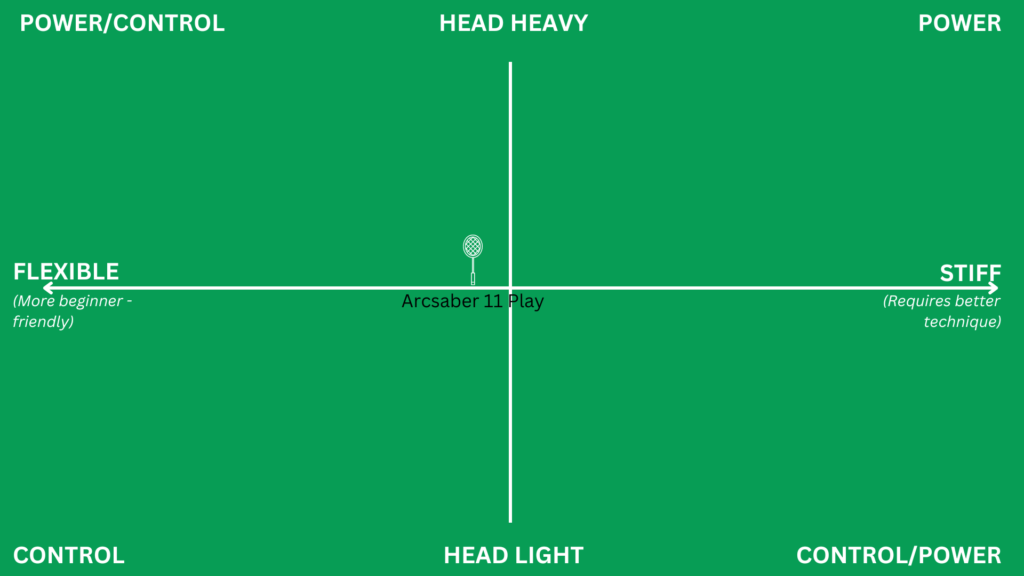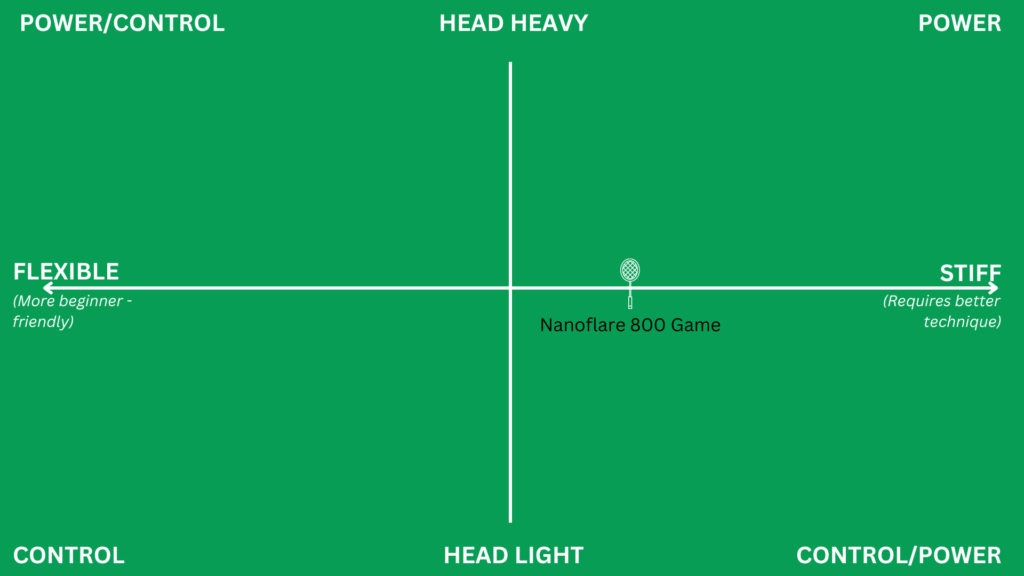THIS GUIDE HAS RECEIVED 6 UPDATES. THE LAST WAS MADE ON 22TH MARCH, 2025
- I rearranged the racket groups to refine the categories
- The racket recommendations were updated
In my recent search for the best badminton rackets for doubles, I dusted off my old friend, a smash-prone racket that I didn’t feel skilled enough to take advantage of earlier in my badminton “career”.
I wanted to compare it against my flexible 2-for-1 garden racket to figure out what would work best for me in preparation for an upcoming tournament.
That led me down the rabbit hole researching a ton of rackets to understand if I already had the best fit for me or if I should consider “befriending” (aka buying and learning) a new one.
I figured it would make sense to put my research here if anyone else is looking for a new doubles racket too.
To be honest with you, the research was overwhelming as there are so many rackets available, and except for a few overarching categories, they all seem awfully similar. Each brand has a few distinct racket styles within the overarching categories of power, speed, and control.
It’s tricky to compare rackets of the same style across brands with each other, such as attacking power rackets from Yonex against those from Victor or Li-Ning.
They name their technology differently and it can be challenging to figure out which rackets are intended for the entry-level player compared to advanced, beyond guessing based on the price. It almost feels as if we need to be a racket engineer in order to understand.
Anyway, enough about me blabbering about how confusing it is to find the right racket. I’m sure you’re already aware of that and that’s why you’re here.
The key ingredients in the best badminton doubles rackets
I’ve noticed that there’s a clear difference between singles and doubles games, and whether you prefer to play the front or rear court, which translates back to the racket.
Doubles games tend to be higher paced, more prone to fast drives across the net, and forcing the opponent to make errors. The serve, return of serve, and keeping the attack also often have a bigger impact on the points than in singles where footwork and stamina are said to make the difference.
It tends to be easier to block or lift smashes in doubles with two players covering the sides of the court, so sequences of lift-smash-lift-smash are common. In singles it’s more common to finish the rally by hammering it in the ground with a well-placed smash.
In terms of rackets, that translates into players often wanting a lighter and faster racket compared to singles. Players tend to prefer the lighter 4U weight class, needing to switch between grips and quickly moving the racket around near their body to cover flat and fast duels around the mid-court for example.
These types of shots tend to come fast with little reaction time, which makes it challenging to react if you’re running around with a heavy sledgehammer. Doubles games also offer many opportunities to win points through intercepting shots by pushing the shuttle back earlier than otherwise expected and catching the opponent off guard. Which, again, requires speed.
Another key component is how technically skilled you are and how much power assistance you’d like from your racket. A flexible racket will be great for beginners as it’ll be more forgiving if you don’t hit the shuttle with good technical skill and timing, whereas a stiffer racket can produce more power but will punish you if your technique isn’t good enough to tame the beast.
With that in mind, a head heavy or evenly balanced racket tends to produce the best power in the rear court whereas a head light racket tends to provide better performance around the front court. With many new combinations and technology, it isn’t that straightforward but it’s an easy rule of thumb as a general sense of direction.
Okay, enough hoo-ha. Let’s look at some rackets!
The best badminton rackets for doubles: four kickass options to rule the courts
Instead of a long list of potential rackets that you can research until the end of time, I’ve narrowed everything down to just five based on your skill level.
Hey reader, a quick interruption
I’m experimenting partnering with webshops that sell badminton gear, like Amazon. I’ll include links to buy the gear I review and if you do, they’ll pay me a small commission. That doesn’t change your price and you’ll get more play-tested gear as a result but I thought it was fair to let you know.
As an Amazon Associate, I earn from qualifying purchases.
I appreciate your support,
Aske
Here’s the breakdown of the best badminton rackets for doubles:
1. Best racket for beginners and low-intermediate players wanting everything: Yonex Arcsaber 11 Play (and the Arcsaber 7 Tour when you’re ready for the ‘intermediate-level’ upgrade)
2. Best racket for intermediate players wanting power: Yonex Astrox 88D Game (3. gen, 2024)
3. Best racket for intermediate players wanting defense: Yonex Nanoflare 800 Game
Table of Contents
The four best badminton rackets for doubles compared in a matrix
Here’s an overview of all the rackets and where they fall on a racket matrix comparing the flexibility of a racket compared to its head heaviness.

1. Best racket for beginners and low-intermediate players wanting everything: Yonex Arcsaber 11 Play

Yonex’s Arcsaber 11 Play is a great option if you don’t have a pronounced playing style focusing primarily on defense and counter-attacking or straight-out attacking or smashing.
I recently play-tested the Arcsaber 11 Play and found that it’s well suited for doubles games as you’ll be pushed around the court during rotations and have to handle both frontcourt net play, rearcourt attacks, and midcourt duels.
Since this racket isn’t meant to be crazy powerful, it helps you avoid only pushing the game toward lifts that you can attack on but allows you to play with more versatility.
Overall, it’s an awesome racket and great value for money. The downside is that it won’t be super fast or powerful.
If you’re ready for something slightly crisper and stiffer, check out my experience with the “older sibling”, the Arcsaber 7 Tour.
It doesn’t come in the Game edition, normally for intermediate players, but the Tour and Pro editions with about a 30% difference in price, have a slightly more flexible shaft than the 11 Tour and Pro.
That makes it a suitable upgrade when your skills are ready for an upgrade from the Arcsaber 11 Play (most noticeably that you’re better at generating power without a head heavy racket to help).
2. Best racket for intermediate players wanting power: Yonex Astrox 88D Game (3. gen, 2024)

Where I previously liked the Astrox 100 Game, I’m now finding that it has too much power for the front half of the court in doubles.
The especially became apparent when I tested the new Yonex Astrox 88D Game (3. gen, launched in 2024).
Even though it’s a power-based racket and has plenty of it, it’s been dialed back a touch compared to the previous generation. As a racket marketed for the rearcourt in doubles, that might seem odd at first…
But, while playing with it on court I didn’t mind at all. I found myself appreciating the extra speed it has gotten in exchange since you’ll naturally be rotated to the frontcourt regularly. It isn’t all roses and unicorns, though, as the smaller sweet spot can make things tricker when the shuttles are flying fast.
Here’s my in-depth review of the Yonex Astrox 88D Game (3. gen). If you like to play both doubles and singles games, this one is a suitable option to balance both.
3. Best racket for intermediate players wanting defense: Yonex Nanoflare 800 Game

I was debating whether to include this racket and category or not as the Arcsaber 11 Play below does nearly as good a job in defense as this Yonex Astrox 1000 Game.
The 1000 Game is a fun racket though, and when I tested it I was able to move the racket but to the shuttlecock faster than I expected, especially in situations where my reflexes were slow.
I found it suitable when playing at the front court in doubles games and I was even able to perform quite powerful smashes at times if I was ready and well positioned for it. At the same time, I also found myself missing a little bit of extra power in lifts and clears, though not as much as I was expecting from a head light racket.
In my experience, this racket required some getting used to even though it was fun. You can read more about it in my on court-play test of it here.
If I weren’t experimenting with more rackets and had to pick something similar to the Arcsaber 11 Play, but with a crisper, stiffer, and more responsive feel, I’d go with the Nanoflare 800 Game.
It’s close to even balance and I found it the easiest to generate power with among the Nanoflare 700 Game, 800 Game, and 1000 Game over the course of an entire game rather than just one shot.
I had plenty of fun with it. If this strikes your curiosity, check out my in-depth Nanoflare 800 Game review.
Takeaways
- Doubles games usually require more speedy rackets in the lighter weight class than singles games
- When it comes to the best badminton rackets for doubles, rackets on the head lighter side tend to suit the front court and net play better whereas head heavy rackets tend to be better for the rear court. However, with new combinations in recent years, it isn’t that simple anymore but it’s a good general rule of thumb to simplify things
- The more flexible the racket, the more suitable for beginners it is as it offers more assistance if your technique and timing aren’t perfect yet
It depends on your style but the Yonex Astrox 100ZZ as currently used by Viktor Axelsen is a good contender as the best racket for smashing. Its weight balance is head heavy and it can deliver raw power in your smash. If you can tame it that is – it isn’t intended for beginners due to its extra stiff shaft.
The Astrox 99 can be good for doubles but these days there are similar and more popular rackets out there like the Astrox 88S and 88D depending on your style of play.
Some pro men’s doubles players use the Astrox 100ZZ racket as their preferred racket, often for the rear court to deliver devastating smashes and raw power. It isn’t intended for beginners due it its extra stiff shaft that requires good technique.
